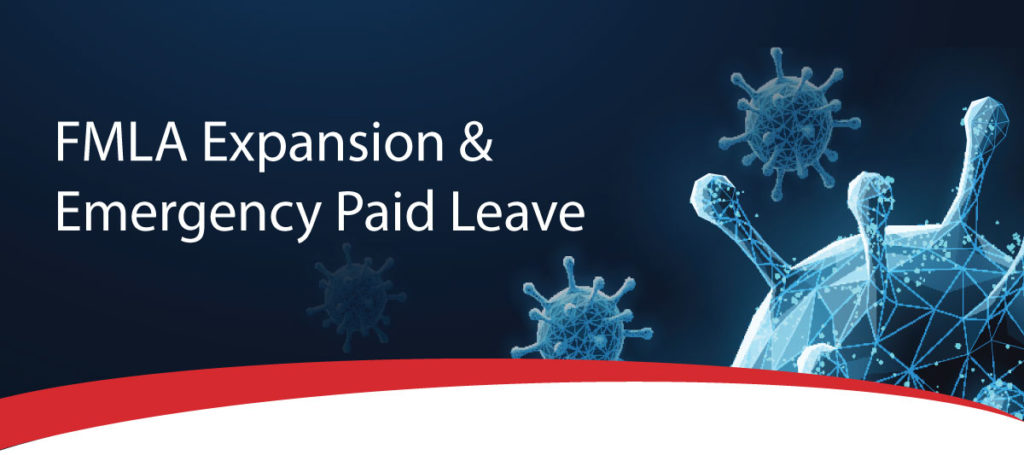
Yesterday, President Trump signed into law the “Families First Coronavirus Response Act”. This new law requires certain employers to provide emergency paid leave under the Federal Family and Medical Leave Act (FMLA) and emergency paid sick leave. The main components of the acts are below:
Emergency Family and Medical Leave Act
The law takes effect April 2, 2020, expires December 31, 2020 and applies to all employers with fewer than 500 employees. Eligible employees include full and part time employees that have been on the Company’s payroll for 30 days. Employees may take up to 12 weeks of FMLA leave for circumstances where an employee is unable to work (or telework) or to care for a minor child if the child’s school has been closed.
The first 10 days are unpaid, but an employee can substitute accrued paid leave (including emergency paid leave described below). The remaining 10 weeks of family medical leave are paid at 2/3 of the employee’s regular rate of pay up to a maximum of $200 per day or $10,000 total. Emergency FMLA leave is job protected; the employer must restore the employee to the same or equivalent position upon their return to work. However, this law includes an exception for employers with fewer than 25 employees, if the employee’s position no longer exists following the leave. This new law provides refundable tax credits; employers are encouraged to work with their tax consultants for further information.
Emergency Paid Sick Leave Act
This law takes effect April 2, 2020, expires December 31, 2020 and applies to employers with fewer than 500 employees. This law applies to all employees, there is no employment for 30 days requirement. Employers must provide paid sick leave to an employee who is unable to work or telework because of the following reason:
- the employee is subject to a federal, state or local quarantine or isolation order related to COVID-19;
- the employee has been advised by a health care provider to self-quarantine because of COVID-19;
- the employee is experiencing symptoms of COVID-19 and is seeking a medical diagnosis;
- the employee is caring for an individual subject or advised to quarantine or isolation;
- the employee is caring for a son or daughter whose school or place of care is closed, or child care provider is unavailable, due to COVID-19 precautions; or
- the employee is experiencing substantially similar conditions as specified by the Secretary of Health and Human Services, in consultation with the Secretaries of Labor and Treasury.
Full time employees receive 80 hours of emergency paid sick leave at their regular rate of pay, however, when caring for a family member (for reasons 4, 5, and 6 above), sick leave is paid at 2/3 the employee’s regular rate. Part time employees receive sick leave based on the number of hours that the employee works on average, over a 2-week period.
The law limits paid leave to $511.00 per day ($5,110 in total) where leave is taken for reasons (1), (2), and (3) noted above (generally, an employee’s own illness or quarantine); and $200 per day ($2,000 in total) where leave is taken for reasons (4), (5), or (6) (care for others or school closures). There is a sequence of sick leave use requirement: Employers must allow the employee to first use emergency sick leave provided by this leave, then use any remaining accrued paid leave under the employer’s policy. The employer cannot require the employee to use accrued leave under the employer’s policy first. Sick leave hours do not carry over after December 31, 2020. There are also refundable tax credits for employers.
Please note that this law does not take prior paid leave policies into consideration, it is in addition to any current leave policies that you may have in place. Any paid leave provided by the employer before the law cannot be ‘credited’ to an employee’s paid leave entitlement under the new law.

For additional assistance, please contact a FosterThomas advisor today.

